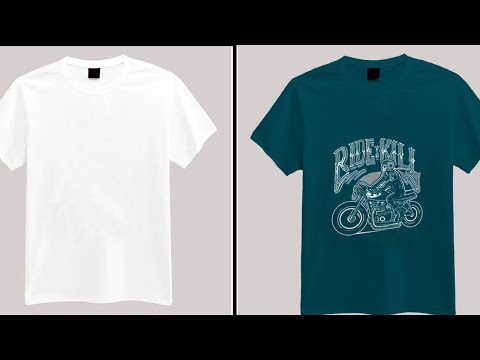- Find an image of a plain t-shirt.
I used one that a person was wearing, but you can choose a flat t-shirt on a table as well. The flatter the shirt, the easier the mock-up will be to create.
The final step of this tutorial only works with a white or light-colored shirt, but for more advanced Photoshop users, feel free to play around with other colors as well. (You’ll just need to use an image with a transparent background.) - Bring the photoshop layer with your design to the top of the file. Resize using the free transform tools.
If you created your design in Photoshop with multiple layers, condense them into one layer using “merge layers” for this tutorial. (You can always make a copy of the layers and hide them in a folder in case you need to go back and edit later.)
Drag the design so that it is on top of the t-shirt image. If it’s too large or too small, press the command + T keys on a Mac (or ctrl+T on a PC) to open the free transform tools and drag the design until it is the correct size. Once you’re done, press enter. It might look like this—but don’t worry. We’ll fix it.
- Remove any background colors from your design by changing the blending mode of the “design” layer to “multiply”.
If you are using a .png with a transparent background, don’t skip this step! It will give your design some realistic texture to appear as if it’s truly on the shirt.If you are using a .jpeg with a white background, you can remove the white parts of the image by changing the “blending mode” of the layer to “multiply.” The blending mode can be found in the layer window, right above the layers themselves. (In InDesign and Illustrator, you’ll have to open a window called “appearance” to see it. It’s hidden under the opacity options.)Blending modes affect the way that colors overlap on an image. Multiply is a helpful tool for allowing slight texture to shine through layers (It is explained more in this tutorial for creating a trendy glitch effect).For our mock-up, using multiply will remove white parts of the image, but it also allows any contours of the shirt to shine through your design, creating a realistic effect as if the design is really on the shirt.

